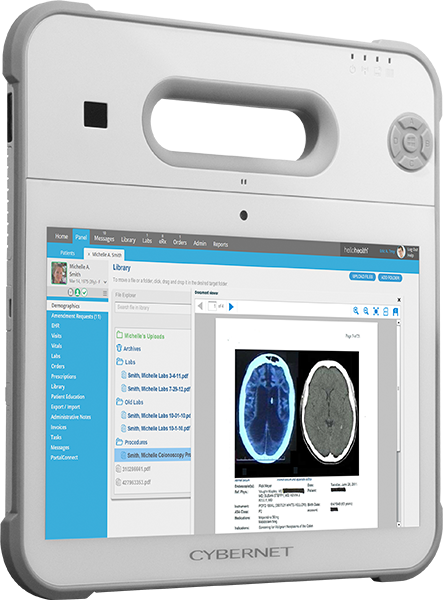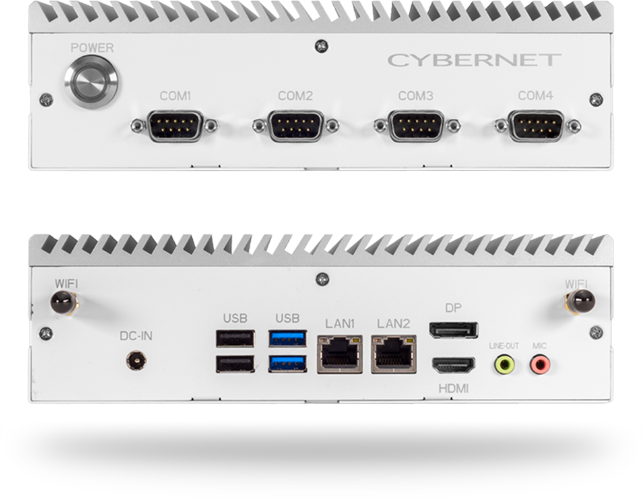The days when patients had to visit providers' offices for diagnosis and treatment are long gone. Thanks to telehealth, providers can deliver quality healthcare to their patients from a distance, whether they're living in remote rural areas or are too infirm to leave their care facility. While the technology can pose challenges to medical groups, they can also be addressed with the right plan and a step-by-step implementation approach.
- What Is Telehealth?
- Common Uses and Examples of Telehealth Services in Action
- Benefits of Telehealth
- Telehealth: Challenges, Limitations, and Overcoming Them
- Telehealth Implementation Checklist
What Is Telehealth?
Simply, telehealth allows providers to deliver health care from a distance. A notable example is clinical services, in which the provider diagnoses the patient via a video connection or by phone. Other examples are when providers monitor patients remotely and teach medical students from thousands of miles away.
Telehealth vs. Telemedicine
Telehealth and telemedicine are often mentioned together. Many people think they're the same and use the terms interchangeably. However, telehealth and telemedicine have distinct meanings.
- Telemedicine: Strictly the delivery of clinical services to patients (e.g., virtual consultations, e-prescriptions). The above provider-patient consultation is an example of telemedicine. The same would be true for a psychiatrist counseling a patient virtually (telepsychiatry). Telemedicine is considered a subset of telehealth.
- Telehealth: Encompasses everything under telemedicine, as well as non-clinical healthcare services. A provider remotely teaching medical students is implementing telehealth, not telemedicine. Providers meeting virtually to discuss an upcoming surgery is another example.
Common Uses and Examples of Telehealth Services in Action
Telehealth is a result of the digital transformation in healthcare, in which electronic devices and other forms of digital technology, such as medical computers, Wi-Fi, and cloud-based systems, have revolutionized the healthcare sector.
This approach offers several advantages.
Virtual Connection In Remote Places
People in rural areas may be many miles from a proper medical clinic or hospital. There are also many patients who cannot leave their locations due to injury or are infirm. And house calls, in which providers directly visit patients at their homes, are limited in the modern age.
Telehealth allows providers to visit these patients virtually. Making a diagnosis, prescribing medication, or consulting on long-term care are just a few tasks they can perform remotely. Providers can even take readings, such as breathing tests, with the patient's help or that of an on-site caregiver. Regardless, the technology allows patients without ready access to healthcare due to distance to receive quality treatment.
Remote Patient Monitoring
Remote Patient Monitoring (RPM) involves the reporting, collection, transmission, and evaluation of patient health data. Examples include:
- blood pressures
- cardiac stats
- oxygen levels
- respiratory rates
The data is gathered by electronic devices like wearables, mobile devices, smartphone apps, and all-in-one medical PCs. Telehealth transmits all information to the provider and their medical staff, who can review it at their leisure, in real-time, or a combination of both. This allows them to detect any complications early as well as identify patients needing medical attention before in-person appointments. Moreover, chronic conditions like COPD and cardiac complications can be more readily and efficiently managed.
Greater Healthcare Information Management
Modern healthcare generates an enormous amount of information. Examples include CAT scans, MRIs, X-rays, photos, videos, and text-based patient data. In the past, this information was recorded on paper and stored in file cabinets and boxes. This made information management cumbersome, especially when conveying information to off-site facilities, such as a provider located out of state or even in another country.
Telehealth eliminates many of those issues. Today, such information is stored in secure servers, routers, and email platforms. Providers can access such information to make a proper diagnosis and treatment, no matter their location. Even patients can access select records if given the right permissions.
Remote Wound and Trauma Care
Trauma, like physical injury and wounds, needs immediate attention. Unfortunately, getting traumatized patients to the nearest ER takes time via emergency vehicles, and the provider won't be able to diagnose them appropriately until they arrive on-site.
Telehealth can help resolve this dilemma. An EMT onboard can take a picture of the wound with their medical computer tablet and send it to the ER. Providers there can perform a preliminary diagnosis based on the picture, recommending proper dressing and initial wound care to the EMT. The ER can also prepare for the patient's arrival, such as having X-ray machines or burn treatment equipment ready for immediate use.
Benefits of Telehealth
Telehealth's ability to bridge the distance between providers and patients can deliver measurable advantages when set up correctly.
- Increased Access: Rural and underserved populations can receive quality healthcare, resulting in improved patient outcomes from illnesses and injuries, as well as increased overall satisfaction.
- Operational Efficiency: Healthcare groups can optimize provider-patient appointments, allowing for more visits without compromising the quality of care.
- Cost Containment: By staying in touch with discharged patients and treating them as needed, medical groups can reduce the likelihood – and associated costs – of emergency department visits and hospital readmissions.
Enhanced Patient Engagement: By accessing their electronic medical records (EMR) and educational resources, patients can actively participate in their own care, leading to reduced anxiety and stress during recovery.
Telehealth: Challenges, Limitations, and Overcoming Them
Telehealth addresses many gaps in healthcare; namely, the delivery of medical care between providers and patients. Medical groups looking to implement the technology should be aware of its challenges and limitations. Fortunately, solutions have been found for many of them.
Lack of Technology Integration
Here, the patient may not have Wi-Fi connectivity, or there may be an incompatibility between the EMR software used by all the parties involved (data silos). Solutions for these two include the installation of temporary connectivity at the patient's residence and the use of third-party companies to bridge the gap between the different data silos.
Diagnosis Limitations
Information is key in patient diagnosis and treatment. For providers, the more information they have about the patient's condition, the better.
Unfortunately, in telehealth, providers are limited to what they can see of the patient on-screen and what they can gather about the patient's condition. Wearable devices, or simply wearables, on patients make it easier to gather more accurate information. Other ways include having the patient or on-site caregiver connect a medical device like a pulse oximeter to a medical-grade tablet to collect and send the necessary data.
Information Gaps
Providers may not have a patient's complete EMR at the other end of the virtual visit. This is especially true if they're brand new, a referral, or have a different primary provider. Increased security measures (see below) may encourage hospitals to provide further access to medical records to more providers.
Security and Privacy Concerns
Patient data is valuable and a frequent target for cyberattacks. Medical-grade computers with Single Sign-On, such as those using Imprivata, can help ensure that only authorized medical personnel access those records.
Reimbursement and Payment Models
Some insurance companies may not cover telehealth visits. Healthcare groups should have proper hardware and software solutions in place to demonstrate why telehealth should be reimbursed, given it's an essential part of healthcare.
Telehealth Implementation Checklist
So your healthcare group has decided to set up telehealth as one of its services. How do you go about it? The provided step-by-step playbook can guide you and your team, ensuring you don't miss anything vital and suffer possibly costly consequences.
Pre-Implementation Planning
Define the objectives and goals of bringing telehealth to your healthcare group. Specifically, why do you want to do it now? Form an implementation team focused on addressing this step, giving them the responsibilities such as conducting needs assessments and compliance checks on all plans.
Technology Infrastructure
All hardware, software requirements, and related tech issues are addressed in this step. These can range from compatibility with current networks and medical PCs best suited for the hospital setting to telehealth platforms, as well as security concerns (e.g., compliance with HIPAA).
Training and Education
All staff involved will need to be trained in the involved technologies. How to use the client software, troubleshooting, and proper patient conduct are just a few of the subjects that will need to be covered. Patients will also need to be educated about the service.
Workflow and Process Integration
Telehealth brings significant changes to many clinical services. Example: Providers cannot directly take the patient's blood pressure during virtual visits. Same with listening to their breathing. Alternatives must be developed and their use trained. Vocal biomarkers, which can detect disease by hearing it in the patient’s voice, can be integrated with telehealth and other remote monitoring technologies.
Legal and Reimbursement Considerations
Telehealth is relatively new, and reimbursement by insurance companies and the government can be confusing. Your group should familiarize itself with current reimbursement policies, including licensing and credentialing requirements.
Test and Quality Assurance
The medical group must test the new telehealth system before it goes live. Develop checklists of these tests, and properly document the results of mock sessions. Go over the results and adjust your system accordingly.
Launch and Implementation
This final section addresses the pilot phase, during which the system is introduced to a limited audience. Examples include offering telehealth services exclusively to pregnant patients or making the service available only at late hours (i.e., between 1:00 AM and 4:00 AM). Once you're satisfied the pilot is working correctly, you can fully roll out the telehealth service throughout the rest of the group.
Telehealth: Unlocking the Future of Healthcare with Cybernet Computers
Telehealth connects patients and providers without the need for inpatient visits. Wi-Fi, video conferencing, and other technologies bridge the distance between the two, enabling advantages ranging from 24/7 access to medical care to the remote monitoring of chronic issues.
Are you interested in knowing more about telehealth? Contact Cybernet Manufacturing for more info. We'll be happy to review how the technology works in conjunction with our medical computer lineup and discuss how implementing them together can provide numerous benefits to you and your group.

